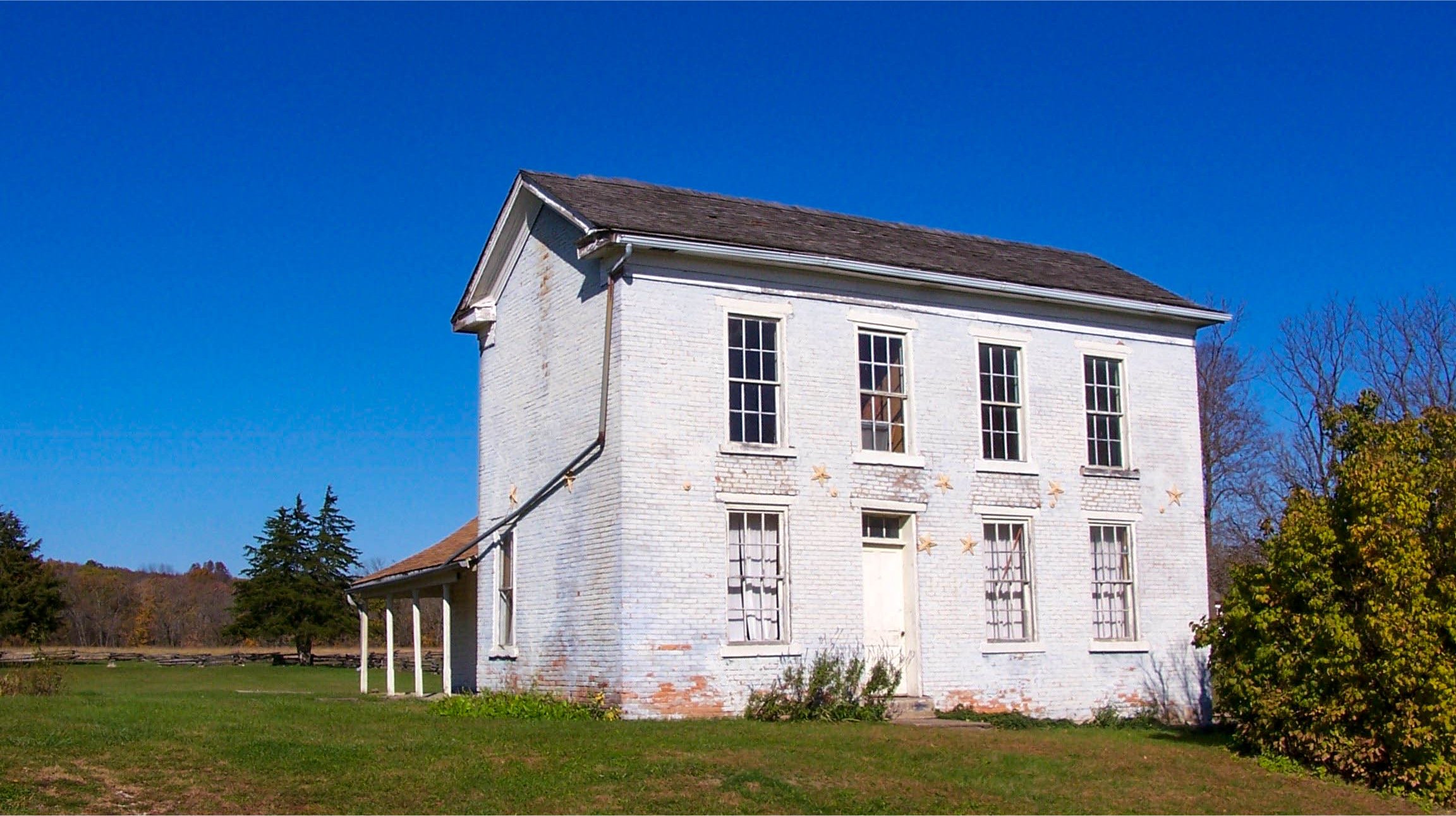Highway CC
Revere, Missouri
The Battle of Athens State Historic Site sits on over 400 acres of land along the Des Moines River. The site encompasses the once thriving but now deserted town of Athens, the Des Moines River Ravines Natural Area, and the remains of an early 19th century Sauk and Fox village. The town of Athens began when John Boon of Kentucky settled in area around 1831. By the late 1840’s a federal lock and dam had been built on the Des Moines River turning Athens into a bustling river port of 500 people, 50 businesses, 5 churches and a two-story public school. Businesses included a large hotel, a wagon factory, a meat packing plant and a large mill that produced flour, cornmeal, lumber, and cotton and woolen products. Athens prospered until the outbreak of the Civil War. Most of the region was settled by immigrants from the upper South and Athens was considered by Unionists to be a hotbed of pro-South sentiment. By the summer of 1861 most northeast Missourians had begun to choose sides and the Union supporters rallied around David Moore, who had raised a force of about 500 men. Confederate supporters rallied around Colonel Martin Green who had raised a force of about 3,000 men that happened to include two of Moore's sons.
On July 21, 1861 with the help of a company of Illinois militia and a company of Iowa Home Guards, Moore attacked the village of Etna in Scotland County, Missouri and drove off the cavalry of the Missouri State Guard. Moore then fell back and on July 24 Moore entered and occupied Athens, seizing homes and businesses from pro-South supporters to quarter and provision his troops. Colonel Green responded by entering Edina in Knox County, Missouri on July 31 and driving off the local Home Guards and then proceeded towards Athens. On August 4 Green bivouacked seven miles west of Athens and each side prepared for battle. The confrontation between Moore's and Green's forces took place at Athens on August 5 with the battle beginning around 5 a.m. Moore and the Unionists were surrounded on three sides by Green's troops, with the Des Moines River to their rear. Despite being outnumbered at least five to one, Moore's men were better trained and equipped, having just received several hundred Springfield rifled muskets while Greens’ men were armed with shot guns and squirrel rifles and were mainly poorly equipped, untrained and untested recruits. After about two hours of fighting, at least 50 soldiers had been wounded or killed and the pro-South side was demoralized and in full retreat.
The battle’s biggest loser was the town itself. Bitter feelings between neighbors continued for decades following the Civil War. Athens was also hurt by the shift from river to railroad transportation in the post-war era and by 1900 the town was nearly gone. Commemorations of the Battle of Athens were first held in 1868 and became annual events in 1900. In 1962 area residents interested in preserving the battle site formed the Athens Park Development Association and were able to create Battle of Athens Park. In 1975 the group donated the park to the Missouri State Park Board which created the Battle of Athens State Park. In 1981 the site began hosting Civil War battle re-enactments and in 1985 the facility was reclassified as a state historic site. Archaeological research conducted since the park was established has uncovered evidence that a long Native American occupation of the area preceded the establishment of Athens and included an early 19th century Sauk and Fox village.
Today, the historic site encompasses much of the former town of Athens. Several buildings have been preserved and are undergoing restoration. Foremost is the Thome-Benning house, locally known as "the Cannonball House," which still exhibits two holes made through the kitchen walls by a cannonball during the battle. Visitors can tour the house, visit the Thome mill ruins, participate in guided tours of the historic town site or take advantage of numerous recreation opportunities. There are hiking trails, a lake for fishing, picnic areas, a playground, a campground, and 1.5 miles of Des Moines River frontage. The 408-acre facility also contains the Des Moines River Ravines Natural Area, home of numerous rare ferns, wildflowers and other plants.
Hiking
The Battle of Athens State Historic Site has 3 trails providing a little over 2 miles of trails for hiking. The Snow Trillium trail leads hikes through a natural area while the Mill Trail skirts portions of the historic Civil War battle site.
Camping
Battle of Athens State Historic Site offers basic and electric campsites available on a first-come, first-served basis. Visit the Battle of Athens State Historic Site camping page for more information.
Visiting the Battle of Athens State Historic Site
April through October
The historic site grounds are open from sunrise to 10 pm.
The site office is open daily from 8 am to 4:30 pm.
Tours are available between 10 am and 4 pm daily.
November through March
The historic sites grounds are open from sunrise to sunset.
The site office is not regularly staffed; telephone is monitored for messages .
Tours are available by prior arrangement only.
From December through February, the campground and day-use area are closed.
There is no charge to visit the Battle of Athens State Historic Site
Explore the Clark County area
Battle of Athens State Historic Site - Official site maintained by the Missouri Department of Natural Resources.
















